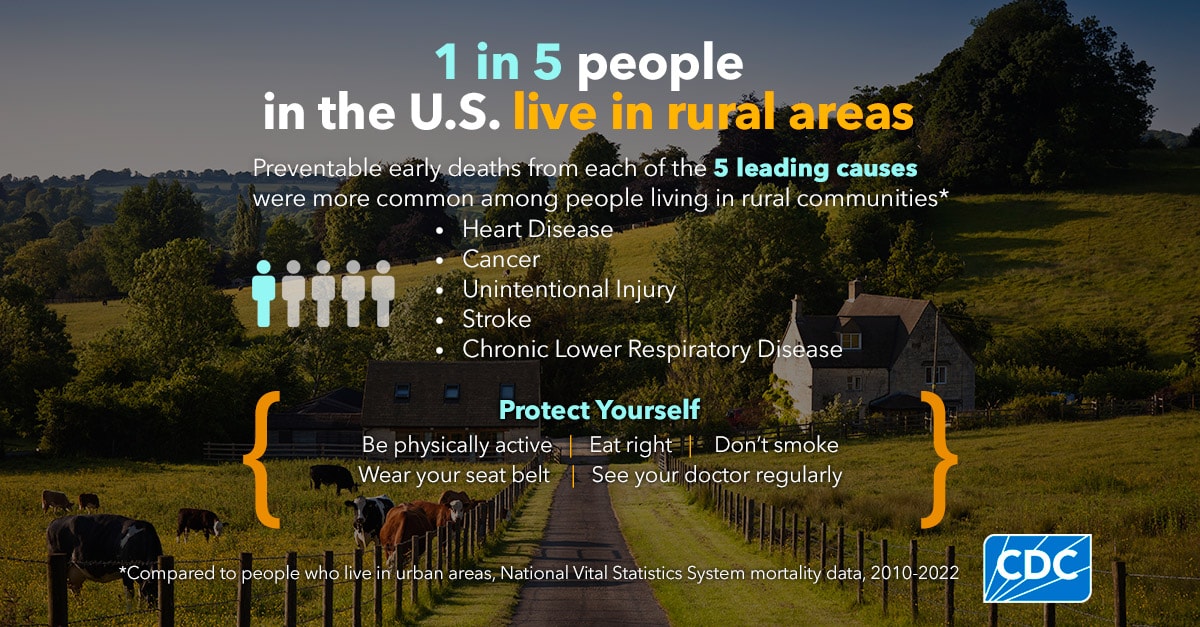At a glance
- People who live in rural communities face numerous health disparities compared with their urban counterparts.
- Rural residents face higher risks of death due to factors like limited access to specialized medical care and emergency services, and exposure to specific environmental hazards.
- CDC has partnered with organizations around the country to create successful programs to improve rural health.

Overview
1 in 5 people in the U.S. live in rural areas. Several demographic, environmental, economic, and social factors may put rural residents at higher risk of death than people who live in urban areas. This is especially true for the top five leading causes of death:
- Heart Disease
- Cancer
- Unintentional Injury
- Chronic Lower Respiratory Disease
- Stroke
View the Office of Rural Health's At-a-Glance to learn about CDC's effort to improve the health and well-being of rural communities.
Why rural residents are at greater risk
People who live in rural areas in the United States tend to be older and sicker than people living in urban areas. Rural residents have higher rates of cigarette smoking, high blood pressure, and obesity. They also have higher rates of poverty, less access to healthcare, and are less likely to have health insurance.
Unintentional injury deaths are more common in rural areas than in urban areas. This is partially due to motor vehicle crashes and opioid overdoses.
Because of this, knowing the dangers to the health of rural residents is important for people who live there.

How it impacts lives
Drug overdose in rural America
Drug overdoses are the leading cause of injury or death in the United States. In 2021, 106,699 drug overdose deaths occurred in the United States. Drug overdose deaths are rising in rural areas and happening more often than in urban areas.
Suicide in rural America
In the United States, suicide was responsible for 46,000 deaths in 2020. That is approximately 1 suicide every 11 minutes. Suicide is a leading cause of death in the United States.
In the past two decades, suicide rates have been consistently higher in and risen more in rural areas than urban areas.
Leading causes of death in rural America
CDC has found that early death from the top five leading causes of death is more common among people living in rural areas than people who live in urban areas.
Priorities
The gaps in health in rural America can be addressed and improved. For example, healthcare providers in rural areas can do the following:
- Screen patients for high blood pressure and make blood pressure control an improvement goal.
- Increase cancer prevention and early detection.
- Encourage physical activity and healthy eating to reduce obesity.
- Encourage an end to smoking.
- Share resources with families who have children with mental, behavioral, or developmental disorders.
- Promote motor vehicle safety.
- Treat opioid use disorder.
For more information, contact CDC's Office of Rural Health at [email protected].
Stories from the field
CDC has several successful programs helping rural Americans. For example, CDC's programs have greatly improved the health of children with specific health issues.
To learn more about CDC's rural health successes, visit the Success Stories page.
